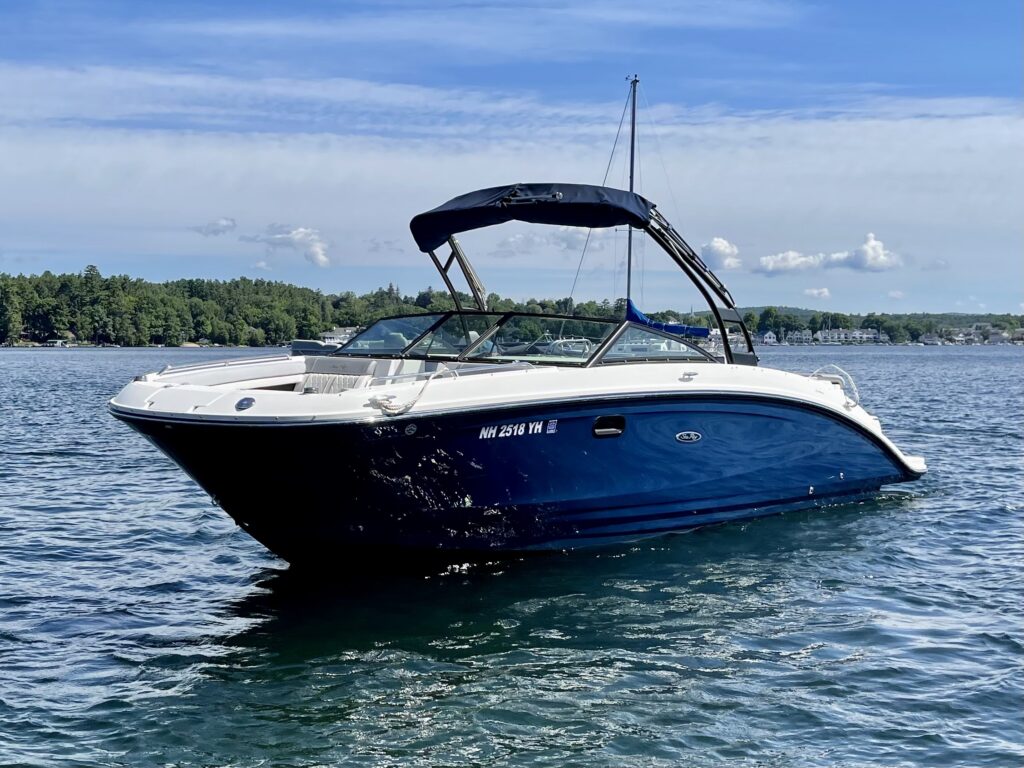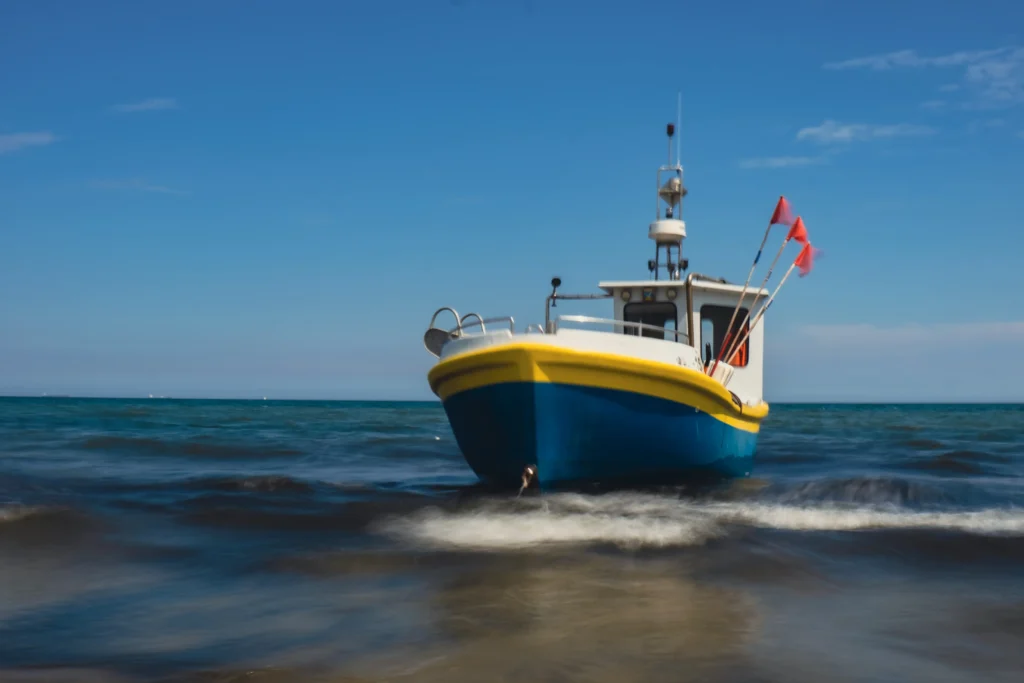In this article, we go over when should blower be operated on gasoline powered boats, explaining how engine compartment ventilation works, why it matters for safety, and how proper use of a blower protects both passengers and your vessel.
Gasoline‑powered boats offer performance and reliability, but they also carry risks associated with fuel vapors. Gasoline gives off highly flammable fumes that are heavier than air. In an enclosed engine compartment, those fumes can accumulate unseen and create an explosive environment. That’s why manufacturers install blowers—powered ventilation fans designed to clear dangerous vapors before you start the engine. Knowing when and how to use this system is one of the most important safety skills for every boater.

Understanding the Role of a Blower
A blower is a small electric fan mounted in the engine compartment of many inboard and stern‑drive gasoline boats. When activated, it draws air out of the engine space and vents it overboard. This process removes heavier‑than‑air gasoline fumes that may have settled near the bilge. The blower does not run all the time; instead, it is used during key moments when the risk of vapor buildup is highest.
The Critical Moment Before Starting the Engine
The most important time to operate your blower is before you start the engine. Every boater should make it routine to switch on the blower and let it run for several minutes prior to ignition. Doing so clears out any fuel vapors that might have leaked during fueling, maintenance, or periods of heat expansion while the boat was idle. The U.S. Coast Guard and manufacturers consistently recommend running the blower for at least four minutes before turning the key.
On a busy dock, this might feel like an extra step when you’re eager to get underway, but those few minutes of ventilation can be lifesaving. Many onboard fires and explosions happen immediately after startup, when trapped fumes ignite from the spark of an ignition system. Running the blower is the simplest prevention.

During and After Refueling
Another essential time to operate the blower is after refueling but before restarting the engine. Fueling a gasoline boat often results in vapors escaping around the fill cap, and some may migrate into the engine space. Even if you smell nothing, fumes can accumulate invisibly. Once refueling is complete, run the blower for several minutes with the engine hatch closed. While the blower is running, it is wise to open any access hatches briefly to allow fresh air to circulate.
Many experienced boaters develop a habit of refueling slowly, checking fuel lines and vents, and then running the blower well beyond the minimum recommendation. It’s better to over‑ventilate than to risk leaving fumes trapped.
Operating the Blower While Idling or Below Deck
Although pre‑start ventilation is critical, you may also need to operate the blower while idling for extended periods or when operating at low speeds with little natural airflow. In enclosed marinas or when running the engine at low revolutions in hot weather, fuel vapors can build slowly. Switching on the blower intermittently keeps the compartment fresh and reduces risks.
On some boats, especially those with cabins or enclosed cockpits, running the blower occasionally during long slow cruises also helps reduce heat buildup and odor in the engine bay. It’s not always required, but it’s an extra layer of safety that many operators choose.

Signs That You Should Run the Blower Longer
While there are recommended minimums, certain situations call for extended blower operation. If you’ve performed maintenance in the engine space, replaced fuel filters, or noticed even a faint odor of fuel, give the blower more time. If your boat has been sitting in intense heat, allowing fuel to expand and vent, or if you’re unsure when the blower was last run, err on the side of caution. Ventilate thoroughly, then perform a “sniff test” near the engine hatch before starting.
Why Proper Blower Use Is a Safety Requirement
Gasoline vapors are heavier than air and do not simply rise and dissipate on their own. They settle low, often in the bilge, where electrical equipment and starters are located. Without ventilation, one spark can ignite fumes and cause an explosion. This is why the U.S. Coast Guard mandates functional ventilation systems on inboard gasoline boats. Ignoring this system is not only unsafe but can also violate regulations and affect insurance claims in the event of an accident.
How to Maintain Your Blower
Knowing when to operate the blower goes hand in hand with ensuring it works properly. Inspect the blower regularly for secure wiring, clear ducting, and unobstructed vents. Replace worn or noisy blowers promptly. A blower that runs quietly but moves no air is as dangerous as not running one at all. During routine maintenance, feel for airflow at the exhaust vent with the blower on to confirm it is evacuating the compartment effectively.

Integrating Blower Use Into Your Routine
The safest boaters make blower operation part of their standard checklist. Before every outing, they walk through a routine: check fuel levels, open hatches, look for leaks, run the blower, perform a sniff test, then start the engine. After refueling, they repeat the process. Over time, this becomes second nature, and you stop thinking of it as an extra task—it’s simply what you do to protect your passengers and investment.
A Real‑World Perspective
One of our clients recently financed a beautiful inboard cruiser through Float Finance. They were new to boating and eager to explore the coast. During our financing process, we often emphasize safety education, and the blower was a key topic. After their first season, they shared that this simple habit—switching on the blower and waiting a few minutes—gave them peace of mind every single trip. They never experienced fuel odors or ventilation issues, and they credit proper blower use as part of the reason their boat remains in excellent condition.
Another customer running a small charter operation on a gasoline‑powered sightseeing boat explained that he not only runs the blower before every trip but also schedules a monthly blower inspection. For him, the safety of paying passengers is paramount, and he knows that his diligence helps avoid catastrophic accidents.

Conclusion
So, when should blower be operated on gasoline powered boats? Always run the blower before starting the engine, run it after every refueling, and consider running it intermittently while idling or when you suspect vapors may have built up. A few minutes of ventilation is a small step that prevents dangerous fuel vapor accumulation, protecting everyone aboard.
At Float Finance, we believe that financing a boat goes hand in hand with understanding how to operate it safely. We encourage every client to follow best practices like proper blower use, because protecting your boat and your passengers ensures many years of enjoyment on the water.
